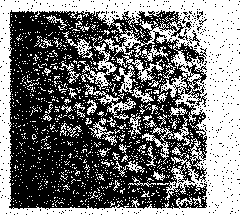Polymer and method for producing the same
A technology of polymers and compounds, applied in the field of polymers, can solve the problem of no monomers capable of ring-opening polymerization, and achieve the effect of reducing formability and thermal stability
- Summary
- Abstract
- Description
- Claims
- Application Information
AI Technical Summary
Problems solved by technology
Method used
Image
Examples
Embodiment 1-1
[0167] Lactide (90 parts by mass) of L-lactic acid, lactide (10 parts by mass) of D-lactic acid, and 3.00 mol% of lauryl alcohol relative to 100 mol% of monomers (acting as an initiator) were placed in a pressure vessel. agent) and 4-pyrrolidinylpyridine (PPY) (3.3 parts by mass), and then heated to 60°C.
[0168] Subsequently, supercritical carbon dioxide (60°C, 10 MPa) was added thereto, followed by reaction at 60°C for 12 hours.
[0169] After the reaction was completed, the flow rate at the outlet of the back pressure valve was adjusted to 5.0 L / min using a pressure pump and a back pressure valve. Then, supercritical carbon dioxide was flowed for 30 minutes, and PPY and residual monomer (lactide) were removed.
[0170] Thereafter, the reaction system was gradually returned to normal temperature and pressure. After three hours, the polymer (polylactic acid) contained in the container was taken out.
[0171] Using the above method, the physical properties (Mn, Mw / Mn, poly...
Embodiment 1-2 to 1-4
[0173] The procedure of Example 1-1 was repeated except that the amount of the initiator was changed as shown in each column of Examples 1-2 to 1-4 in Table 1-1, thereby obtaining a polymer.
[0174] Using the above method, the physical properties of the obtained polymer were measured, as shown in Table 1-1.
Embodiment 1-5 to 1-7
[0176] The procedure of Example 1-1 was repeated except that the reaction temperature was changed as shown in each column of Examples 1-5 to 1-7 in Table 1-1, thereby obtaining a polymer.
[0177] Using the above method, the physical properties of the obtained polymer were measured, as shown in Table 1-1.
PUM
| Property | Measurement | Unit |
|---|---|---|
| particle size | aaaaa | aaaaa |
| size | aaaaa | aaaaa |
Abstract
Description
Claims
Application Information
 Login to View More
Login to View More - R&D
- Intellectual Property
- Life Sciences
- Materials
- Tech Scout
- Unparalleled Data Quality
- Higher Quality Content
- 60% Fewer Hallucinations
Browse by: Latest US Patents, China's latest patents, Technical Efficacy Thesaurus, Application Domain, Technology Topic, Popular Technical Reports.
© 2025 PatSnap. All rights reserved.Legal|Privacy policy|Modern Slavery Act Transparency Statement|Sitemap|About US| Contact US: help@patsnap.com



